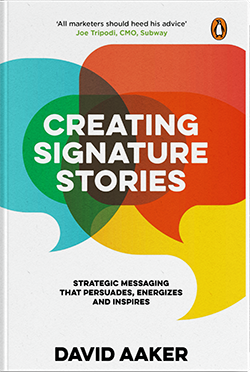BLOG
Driving Brand Relevance
Building Relevant Brands: A New Way to Win with Customers
Ever notice how some brands become part of our daily life so seamlessly that we don’t even think about them until something goes awry, like when Waze fails to detect massive roadwork, or Netflix suggests you might enjoy “Fuller House”?
At Prophet, we know that’s because these brands represent more than a product or service we buy–they’re an integral part of our lives: It’s what we call relentlessly relevant brands. Achieving this level of relevance is no easy feat given the current state of brand-building. For one thing, customers are more in control than ever, and their expectations of brands continue to rise. Technology, from mobile to wearables to Internet-embedded homes, further disrupt those expectations, allowing people to perceive and interact with brands in new ways. Brands that aren’t evolving get lost in the shuffle.
What are Relentlessly Relevant Brands?
Relentlessly relevant brands engage, surprise and connect. They are genuinely modern, finding new ways to delight and deliver. They push themselves to earn and re-earn customers’ loyalty—and they continually redefine what’s possible.
These brands have barreled through passive exposure to come to life, actively participating with customers. They use technology to be more human, creating new experiences to engage with people in ways that enrich their lives. Nike, for example, was once a brand built on bright products, colorful ads and legendary athletes. Today, it’s an ecosystem of dynamic ‘living’ experiences, like the Nike+ community, an ever-expanding universe that includes expert coaching from Nike pros, personal connections to millions of other athletes, training clubs, and valuable partnerships with the likes of Apple, Headspace and ClassPass.
The result is that Nike is one of the few brands with relevance that knows no boundaries, scoring high on our Prophet Brand Relevance IndexTM in every market we track.
How Do You Build Brand Relevance?
Building a relentlessly relevant brand starts with three essential commitments. First, brands must find a strategic purpose that creates shared value. It’s the only way to inspire people, both internally and externally. Next, companies need to engage customers through living brand experiences. And finally, brands need to be powered from the inside out through culture, capabilities, and engagement.
Let’s take a deeper look at the qualities relentlessly relevant brands have.
They Know Their Real Reason-To-Be
These brands know who they are, moving beyond positioning and into purpose. They are centered on a strategic purpose that creates shared value. This brand purpose is the fundamental binding agent between assets and aspirations of the business and customers’ motivations.
Starbucks, of course, sells coffee. But people love it for its bigger ambition, which is to inspire and nurture the human spirit, one person, one cup and one neighborhood at a time.
LEGO has long been a favorite of children for its delightfully consistent little bricks and has integrated those imaginative properties into physical retail, digital enterprises and full-length films. But all of its efforts speak to the purpose that provides so much value to parents: LEGO is inspiring and developing the builders of tomorrow.
It’s not that these brands don’t have a positioning. They do. But what gives them life is that instead of seeing positioning as a static definition of benefit, they understand purpose as fluid and participatory. They know that it’s the people drinking their coffee and building with their toys who make them what they are, and this shared purpose creates common ground. It gives customers and employees permission to build relationships that go beyond the next transaction.
That ignites innovation and growth, and also allows the company to inspire, attract and retain the best talent.
They Create Hyper-Personalized Experiences
Brands that are relentlessly relevant are those that enlarge the universe and engage customers in a living brand experience. That means constant, real-time engagement between customers and brand stewards, giving companies the ability to anticipate, adapt and respond in the context of customers’ lives. It’s what allows brands to create offers that are hyper-personalized, to leverage data in a way that extends experiences and relationships within customers’ lives and to combine human empathy with tech-enabled intelligence. As a result, every interaction delivers greater business impact.
What makes these experiences so powerful is that they are based on the understanding that the days of either/or are behind us. These experiences are sprinting full speed into and/both. They understand that what they offer people needs to embrace the head and the heart, intelligence and emotion, data and story, and strategy and empathy.
“What gives them life is that instead of seeing positioning as a static definition of benefit, they understand purpose as fluid and participatory.”
Think of the way Disney keeps making visits to its properties more magical, by using technology to help guests unlock hotel rooms, make a playdate with Snow White, or even pay for a turkey leg. Or Spotify’s uncanny ability to follow you into an Uber, work with Tinder and Bumble to help you find better dates, and cranks out playlists made up of songs you’ve never listened to but instantly love.
Customers are fiercely loyal to these experiences: When Samsung faced the massive recall of its Galaxy Note, pundits expected customers to defect in droves. The brand’s mobile phones have come back stronger than ever, precisely because people love the way they perform across devices, including smart watches, tablets and increasingly, virtual reality.
They’re Powered From the Inside
Relentlessly relevant brands aren’t managed by a marketing team. They are powered through a company’s culture, capabilities and engagement. Because leadership is in alignment, they can catalyze change, motivate and empower employees throughout the organization to create a self-generating business, balancing customer needs and corporate goals.
Relentlessly relevant brands can drive change and quickly turn new ideas into reality. They empower diversity of thought, customer centricity, collaboration and agility.
Chick-fil-A, for example, is a fast-growing chain of restaurants built around a culture devoted to delivering delicious food with grace, and it strives to have a positive impact on everyone it comes in contact with. It’s no surprise that on our Brand Relevance IndexTM, it scores high for trustworthiness, consistency and having a better product than competitors. From its innovative corporate test chefs, highly-engaged franchisees and hard-working hourly employees, heartfelt hospitality is as meaningful a menu item as its tasty chicken.
Southwest Airlines, the only airline to rank in the Top 50 of our U.S. Index, also recognizes that delivering outstanding customer experiences has to be a companywide commitment. To deliver on its promise, which it sees as serving passengers with warmth, friendliness, individual pride and a sense of humor, starts with a commitment to treat its employees the same way. From ticket agents to baggage handlers to pilots, customers have come to expect a personal connection they don’t get from other carriers.
FINAL THOUGHTS
Relentlessly relevant brands are growing, thriving brands. They have a meaningful role in peoples lives and one they need to earn each day. This is why they use purpose as the north star, engage with customers through living brand experiences and power brands from the inside through company culture. These brands are learning all the time; it’s what helps them stay relevant, find new customers, and continually reinvent themselves for the future.
View the Prophet Brand Relevance IndexTM to learn more about what it takes to be a relentlessly relevant brand.
Related Thinking
Brand Equity – Brand Value_1_A



